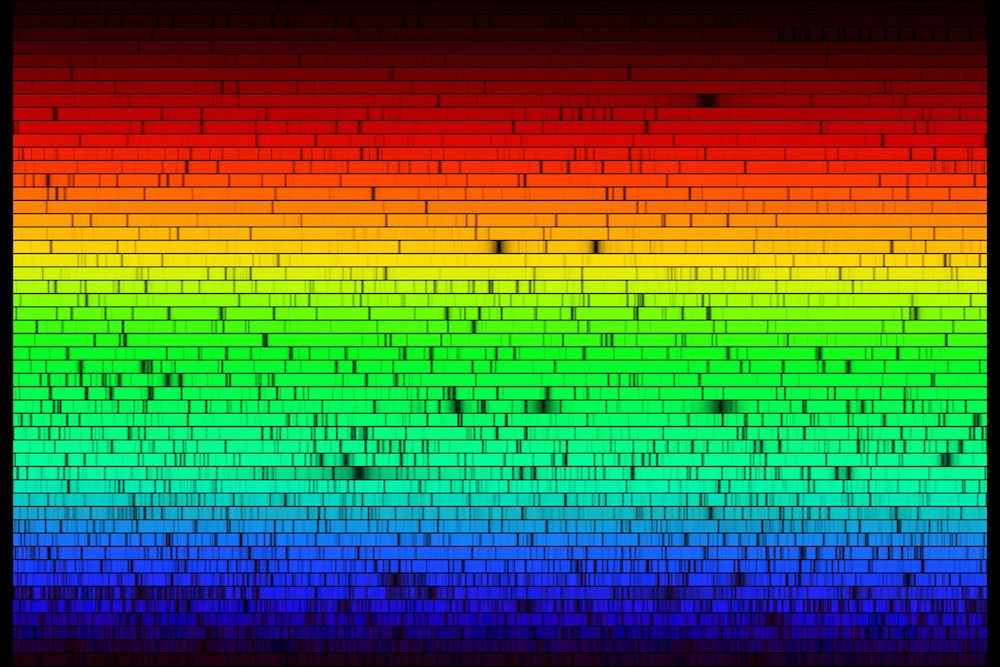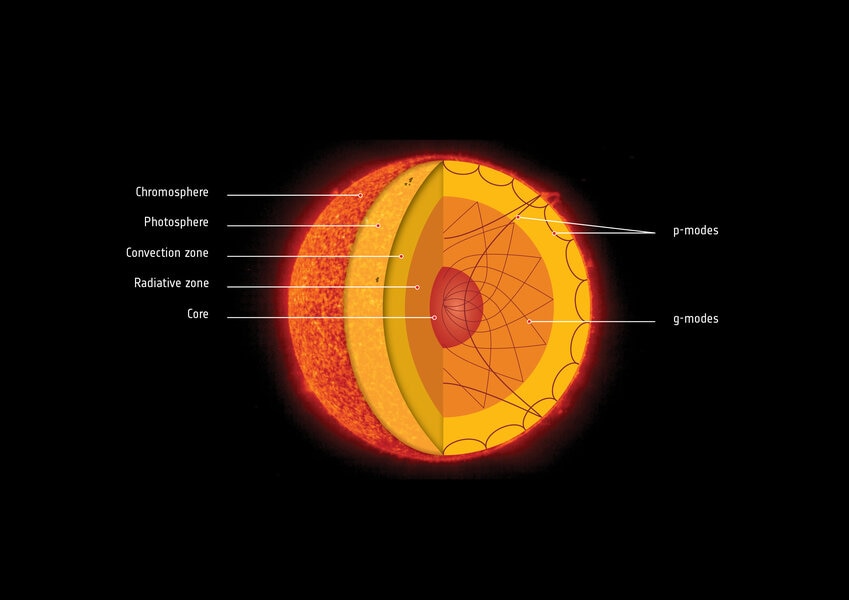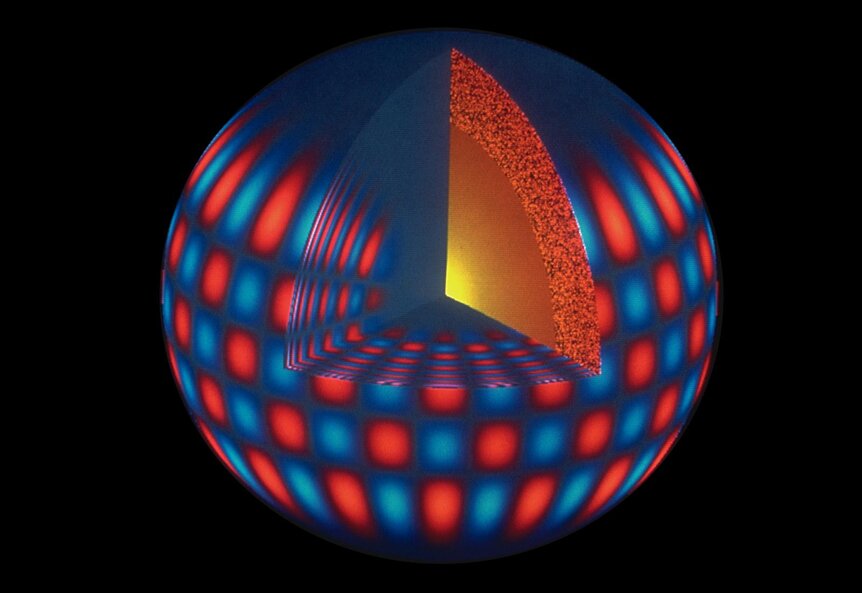Create a free profile to get unlimited access to exclusive videos, sweepstakes, and more!
We're getting a clearer view of the interior of the Sun
A solar paradox has finally been resolved. Well, mostly.

The Sun is a mass of incandescent gas, as They Might Be Giants put it. And not to quibble about it being a plasma and not a gas, they’re right. That also makes it quite opaque, meaning it’s difficult to know what’s going on inside it.
Even though we can see the surface, what’s going on there is still hard to figure out, too. Plasma — ionized gas, meaning the atoms have had one or more electrons stripped from their nuclei — flows up from the interior, cools, and sinks back down. It also carries with it intense and local magnetic fields, which stir things up considerably, making the surface a seething, writhing mess.
It’s not even all that easy to know what the plasma is made of. The amount of hydrogen, helium, lithium, oxygen, and so on can be determined looking at spectra of the Sun, breaking the light up into individual colors (or wavelengths, as scientists prefer to think of them). Each atom absorbs light at a different color, making it possible to identify them and determine their relative amounts, or elemental abundances. Easy in theory, hard in practice.
And that’s been trouble. There’s what’s called the standard model of the Sun that uses the physics of how matter behaves in its interior to understand the structure deep below the surface. In part that depends on the elemental abundances we see on the surface, and the gold standard measurement of those has been around for decades. But then about 20 years ago a re-analysis using better techniques changed all those relative abundances, which in turn messed up the standard model. Suddenly the interior structure of the Sun wasn’t as well known as thought.
The new abundances also didn’t agree with predictions of what they should be based on helioseismology. This is the study of how acoustic waves — sound — travel through the Sun, creating ripples in the surface. Like seismic waves that move through the Earth, these solar waves are affected by the structure under the surface, allowing scientists to understand that structure. Oxygen in particular was a problem, with model after model trying to understand why helioseismology got an abundance higher than what was seen, but it remained a very stubborn issue.
Helioseismology works very well, but then so does measuring the elemental abundances. Yet they disagreed! Is one wrong?
Not exactly. It turns out the solar elemental abundances just needed some tweaking.
A new physical model just published [link to paper] helps clear up some of the issues and provides new abundances for many elements. The model uses a lot of newer and updated methods to calculate those abundances. For example it has better values for how well atoms absorb and emit light inside the Sun, and more sophisticated 3D physics for things like convection — the rising and sinking of hot and less hot material inside the Sun. The big advance was in looking at how energy flows through the Sun; old models used necessary simplifications that turn out to be too simple. Actually doing the full-up math allowed the new model to do a much better job modeling what’s going on inside the Sun.
They find that elements heavier than helium are more abundant than previous measurements, as much as 26% higher! Mind you these are a tiny fraction of the Sun, which is almost entirely made up of hydrogen and helium, but they still play an important role on heat transport inside the Sun, and how waves propagate through it. Happily, they get an abundance of oxygen 15% higher than previous models suggested, which matched the helioseismology results much better.
Nice! It’s always good to hear that some tension between two different methods is resolved. In general that means scientists are doing something right.
Interestingly, a second team also recently looked into very nearly this exact same problem [link to paper]. They took a different tack though: They looked at the Sun’s rotation and magnetic field to see how that affected the interior, and what that might do to affect the chemical composition of the surface. In the past the Sun rotated more quickly, and that means the magnetic field, powered in part by rotation, was stronger. Deep inside the Sun, turbulence generated by rotation and the magnetic field affects how both helium and lithium behave, and using their updated models they were able to get a prediction of the solar surface helium abundance that matches observations, as well as lithium, which is tougher to predict.
However, not all is perfect there. For example, in the deepest part of the Sun, energy flows via radiation, literally atoms emitting light. But at a certain distance from the core the plasma itself starts to move, convecting, which is a more efficient way to transport energy. But where is that line between the two regions?
Helioseismology predicts this happens a little under 500,000 km from the Sun’s center, but the new numbers from this second paper imply it happens about 10,000 km farther out. That’s a significant amount, given the predictions should be accurate to less than 1,000 km. So something still needs to be figured out to get those to come into agreement.
I wonder if the authors of these two papers need to get together; perhaps using the updated abundances from the first paper will help the models in the second. Or perhaps it’s due to something else; either way, both teams have done a lot of work to help us understand our nearest star better. And given how it behaves, and sometimes very much misbehaves, I’m a big fan of knowing how it works better.




























